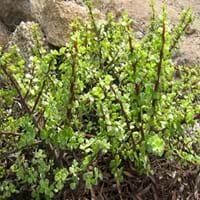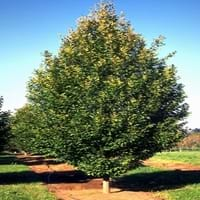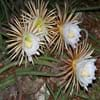Life Span
Perennial
Perennial
Origin
Southern Africa
Europe, Eastern Europe, Southern Europe, Western Europe, Turkey
Types
Limpopo, Prostrata, Aurea, Medio Picta
Not Available
Habitat
Dry areas, Lower slopes, Rocky areas
Hedge, Woodland Garden Canopy
USDA Hardiness Zone
10-12
4-8
Sunset Zone
8, 9, 12, 13, 14, 15, 16, 17, 18, 19, 20, 21, 22, 23, 24
2a, 2b, 3a, 3b, 4, 5, 6, 7, 8, 9, 14, 15, 16, 17
Habit
Twisted/Contorted
Oval or Rounded
Flower Color
Pink
Yellow, Green
Flower Color Modifier
Not Available
Bicolor
Fruit Color
Green, Red
Yellow, Green, Brown
Leaf Color in Spring
Green
Green, Light Green
Leaf Color in Summer
Green
Green, Dark Green
Leaf Color in Fall
Green
Yellow, Yellow green, Orange Red
Leaf Color in Winter
Green
Not Available
Leaf Shape
Succulent
Ovate and toothed
Plant Season
Spring, Summer, Fall, Winter
Summer, Fall, Winter
Sunlight
Full Sun, Partial Sun, Partial shade
Full Sun, Partial Sun, Partial shade
Type of Soil
Loam, Sand
Clay, Loam
The pH of Soil
Acidic, Neutral, Alkaline
Acidic, Neutral
Soil Drainage
Well drained
Average
Bloom Time
Late Spring
Spring
Tolerances
Drought, Dry soil, Heat Tolerance
Pollution, Drought
Where to Plant?
Container, Ground, Pot
Ground
How to Plant?
Seedlings, Stem Planting
Seedlings
Plant Maintenance
Low
Medium
Watering Requirements
Average Water Needs, Needs less watering
Requires regular watering
In Summer
Ample Water
Lots of watering
In Spring
Less Watering
Moderate
In Winter
Less Watering
Average Water
Soil pH
Acidic, Neutral, Alkaline
Acidic, Neutral
Soil Type
Loam, Sand
Clay, Loam
Soil Drainage Capacity
Well drained
Average
Sun Exposure
Full Sun, Partial Sun, Partial shade
Full Sun, Partial Sun, Partial shade
Pruning
Prune if you want to improve plant shape, Remove damaged leaves, Remove dead branches, Remove dead leaves, Remove dead or diseased plant parts
Remove dead or diseased plant parts
Fertilizers
All-Purpose Liquid Fertilizer, Fertilize in early spring, Fertilize late winter
All-Purpose Liquid Fertilizer
Pests and Diseases
Pests and diseases free
Aphids, Coral Spot, Powdery mildew
Plant Tolerance
Drought, Dry soil, Heat Tolerance
Drought
Flowers
Showy
Insignificant
Flower Petal Number
Single
Not Available
Foliage Texture
Bold
Medium
Foliage Sheen
Matte
Glossy
Attracts
Butterflies
Caterpillar, Not Available
Allergy
no allergic reactions
Pollen
Aesthetic Uses
Beautification, Bonsai, Showy Purposes
Bonsai
Beauty Benefits
Good for skin, Improve skin condition, Skin cleanser, Skin inflammation, Skin irritation, Skin Problems
Not Available
Environmental Uses
Air purification, Erosion control, Food for birds, Indoor Air Purification, Prevent Soil Erosion, Shelter for wildlife, Wildlife
Air purification
Medicinal Uses
Dehydration, Diabetes, Skin Disorders, Skin irritation, Sore throat
Bach, Haemostatic, Ophthalmic
Part of Plant Used
Leaves, Stem
Bark, Leaves, Wood
Other Uses
Animal Feed, Showy Purposes, Used As Food, Used as Ornamental plant, Used for its medicinal properties, Used in salads
Used as fuel, Used to make yellow dye
Used As Indoor Plant
Yes
Yes
Used As Outdoor Plant
Yes
Yes
Garden Design
Container, Rock Garden, Wall, Tropical
Feature Plant, Hedges, Screening / Wind Break, Shade Trees, Street Trees
Botanical Name
PORTULACARIA afra
CARPINUS betulus
Common Name
Porkbush, Dwarf jade plant, Spekboom
European Hornbeam
In Hindi
Elephant Bush
European Hornbeam
In German
Elephant Bush
Hainbuche
In French
Elephant Bush
Hornbeam européenne
In Spanish
elefante Bush
Europeo carpe
In Greek
ελέφαντας Μπους
Ευρωπαϊκή Γαύρος
In Portuguese
elefante de Bush
Carpino Europeia
In Polish
Elephant Bush
Europejski Grab
In Latin
bush elephant
Carpinus betulus
Phylum
Embryophyta
Magnoliophyta
Class
Magnoliopsida
Magnoliopsida
Order
Caryophyllales
Fagales
Family
Portulacaceae
Betulaceae
Genus
Portulacaria
Carpinus
Clade
Angiosperms, Core eudicots, Eudicots
Angiosperms, Eudicots, Rosids
Tribe
Not Available
Carpineae
Subfamily
Portulacarioideae
Coryloideae
Number of Species
Not Available
Not Available
Importance of Elephant Bush and European Hornbeam
Want to have the most appropriate plant for your garden? You might want to know the importance of Elephant Bush and European Hornbeam. Basically, these two plants vary in many aspects. Compare Elephant Bush and European Hornbeam as they differ in many characteristics such as their life, care, benefits, facts, etc. Every gardener must at least have the slightest clue about the plants he wants to plant in his garden. Compare their benefits, which differ in many ways like facts and uses. The medicinal use of Elephant Bush is Dehydration, Diabetes, Skin Disorders, Skin irritation and Sore throat whereas of European Hornbeam is Bach, Haemostatic and Ophthalmic. Elephant Bush has beauty benefits as follows: Good for skin, Improve skin condition, Skin cleanser, Skin inflammation, Skin irritation and Skin Problems while European Hornbeam has beauty benefits as follows: Good for skin, Improve skin condition, Skin cleanser, Skin inflammation, Skin irritation and Skin Problems.
Compare Facts of Elephant Bush vs European Hornbeam
How to choose the best garden plant for your garden depending upon its facts? Here garden plant comparison will help you to solve this query. Compare the facts of Elephant Bush vs European Hornbeam and know which one to choose. As garden plants have benefits and other uses, allergy is also a major drawback of plants for some people. Allergic reactions of Elephant Bush are no allergic reactions whereas of European Hornbeam have Pollen respectively. Having a fruit bearing plant in your garden can be a plus point of your garden. Elephant Bush has no showy fruits and European Hornbeam has no showy fruits. Also Elephant Bush is not flowering and European Hornbeam is not flowering . You can compare Elephant Bush and European Hornbeam facts and facts of other plants too.





